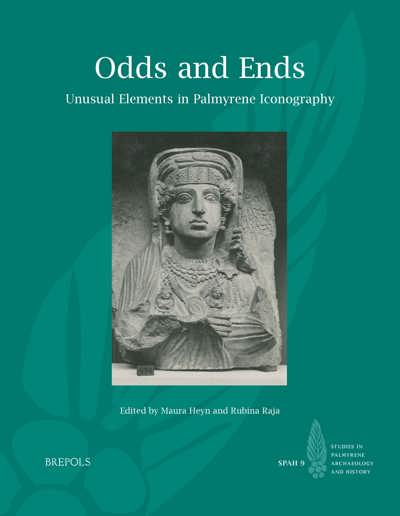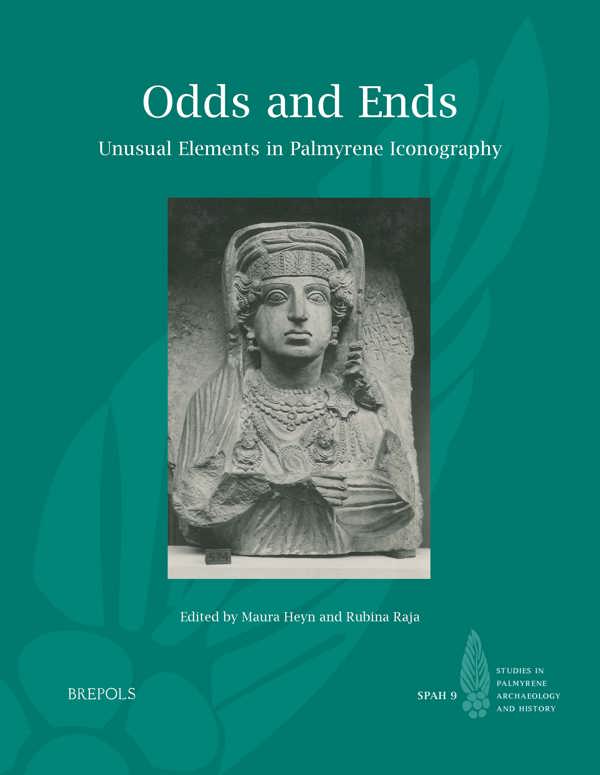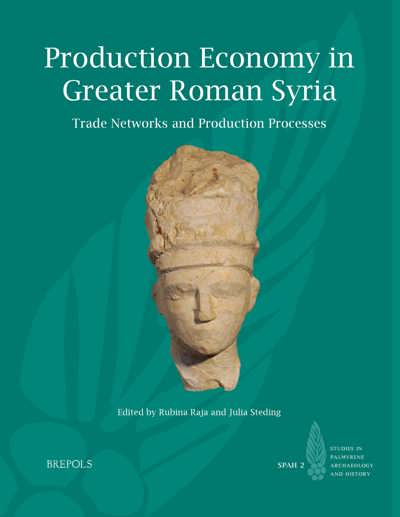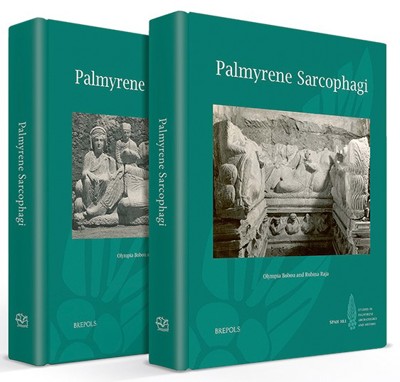
- Pages: xiv + 180 p.
- Size:216 x 280 mm
- Illustrations:45 b/w, 63 col., 1 tables b/w., 1 maps b/w
- Language(s):English
- Publication Year:2023
- € 85,00 EXCL. VAT RETAIL PRICE
- ISBN: 978-2-503-60396-4
- Paperback
- Available
- € 85,00 EXCL. VAT RETAIL PRICE
- ISBN: 978-2-503-60397-1
- E-book
- Available
Maura Heyn is a professor of Classical Studies at the University of North Carolina at Greensboro.
Rubina Raja is professor of classical archaeology at Aarhus University, Denmark and director of the Danish National Research Foundation’s centre of excellence Centre for Urban Network Evolutions (UrbNet, https://urbnet.au.dk/).
The funerary art that was produced in Roman Palmyra, a caravan city in the Syrian steppe desert, is rightly world-renowned. The frontal depictions of the deceased, featured in torso-length portraits, and the large-scale banqueting scenes are iconic, and lent an added mystique by the absence of any literary sources that might aid in their interpretation. But while from a distance these exquisite portraits might seem rather formulaic, when examining more closely, it is clear that these scenes reveal a surprisingly rich and varied funerary décor. Alongside the more popular iconographic choices are singular scenes, motifs, and elements that deviate from the norm, while new patterns and connections between Palmyra and its surroundings are identifiable.
This volume, which draws on the vast materials gathered under the auspices of the Palmyra Portrait Project directed by Professor Rubina Raja, explores the ‘oddities’ raised by the Palmyrene corpus; it examines one-off scenes or elements, and unusual or unparalleled iconographical choices, and it questions how and why such unusual choices should be interpreted. The chapters gathered here not only focus on these visual ‘hapax legomena’ in Palmyra, but also explore the city’s connections with the art of Roman centres to the west, as well as the nearby Hellenistic city states, regional centres of production, and Parthian and Persian sites to the east. Through this approach, the authors engage with the visual richness and sheer amount of choice that existed in Palmyrene funerary art, while also providing unique insights into the knowledge culture that existed within Palmyrene society.
List of Illustrations
Abbreviations
1. Unusual Iconographies, Choices, Musts, and Sculptural Traditions in Palmyra
Maura K. Heyn and Rubina Raja
2. Hunting with Birds in Palmyra: Iconographic Evidence for the Activities of Elite Youths in the Period AD 100–200
Olympia Bobou
3. Playing Games in the Palmyrene Tomb
Maura K. Heyn
4. The Phrygian Cap in Palmyrene Art
Fred C. Albertson
5. Representation of Fish in the Palmyrene Tesserae
Aleksandra Kubiak-Schneider
6. A Palmyrene Relief of Nemesis from Dura-Europos
Lisa R. Brody
7. Anomalies in Funerary Representation Encountered in the Course of the WPAIP’s Research
Jeremy M. Hutton
8. Luxury Jewellery in Palmyrene Funerary Art: Necklaces with Portrait Busts Carried by Women Represented in the Funerary Sculpture
Rubina Raja
9. As Close as You Can Get: Mourning Women in Palmyrene Funerary Art
Rubina Raja
10. Palmyrene Double Reliefs and their Value
Julia Steding
Index




